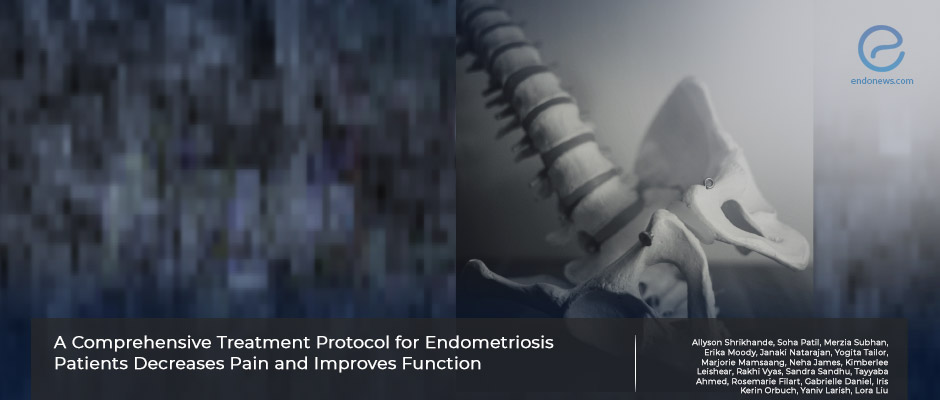Myofascial pain management and endometriosis
Feb 27, 2023
A bouquet of pelvic injections and exercises may give relief to pelvic pain
Key Points
Highlights:
- Blocking pelvic nerves with injections or physical exercises may help with pain management.
Importance:
- The protocol provides insight into central and peripheral pain sensitization in endometriosis patients.
What's done here:
- Sixty women with surgical endometriosis diagnosis and still have pain after surgery have been included.
- All patients had weekly injections to pelvic myofascial trigger points followed by pelvic physiotherapy and cognitive behavioral therapy for 6 weeks.
- All patients filled Visual Analogue Scale and Functional Pelvic Pain Scale which include eight categories (sleeping, bowel, intercourse, walking, bladder, running, working, and lifting), before and 3 months after the treatment package.
Key Results:
- The average Visual Analogue Scale and Functional Pelvic Pain Scale are statistically significantly decreased.
- Along with the Functional Pelvic Pain Scale categories, sleeping, intercourse, and working showed the highest decrease which also helped improvement in daily life.
Limitations:
- The data of the protocol have been collected retrospectively which causes the lack of a control group. But the authors explained it as unethical to apply empty injections to patients.
Lay Summary
Endometriosis is an inflammatory disease that causes inflammation around pelvic muscles and peripheric nerves which ultimately may cause peripheral and central sensitization and result in increased response to pain.
In the study conducted by Shrikhande at al. from the pelvic rehabilitation center, the patients who still suffer from pain after endometriosis surgery was targeted by giving them a package of treatment aiming peripheral and central sensitization and myofascial trigger points.
Sixty women with surgical endometriosis diagnosis and still have pain after surgery have been included. All patients had weekly injections to pelvic myofascial trigger points followed by pelvic physiotherapy and cognitive behavioral therapy for 6 weeks. All patients filled Visual Analogue Scale and Functional Pelvic Pain Scale which include eight categories: sleeping, bowel, intercourse, walking, bladder, running, working, and lifting, before and 3 months after the treatment package.
At the end of the treatment, the average Visual Analogue Scale and Functional Pelvic Pain Scale are statistically significantly decreased. Along with the Functional Pelvic Pain Scale categories, sleeping, intercourse, and working showed the highest decrease which also helped improvement in daily life.
While there are no long-term follow-up results, and no control group included, the study may be a guiding light for patients and clinicians when dealing with unresolved pelvic pain. The study was recently published in Dove Press journals.
Research Source: https://pubmed.ncbi.nlm.nih.gov/36713131/
pelvic pain myofascial injection

